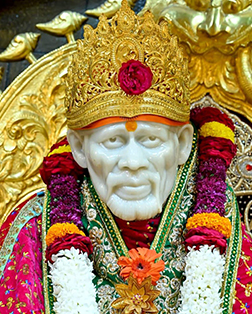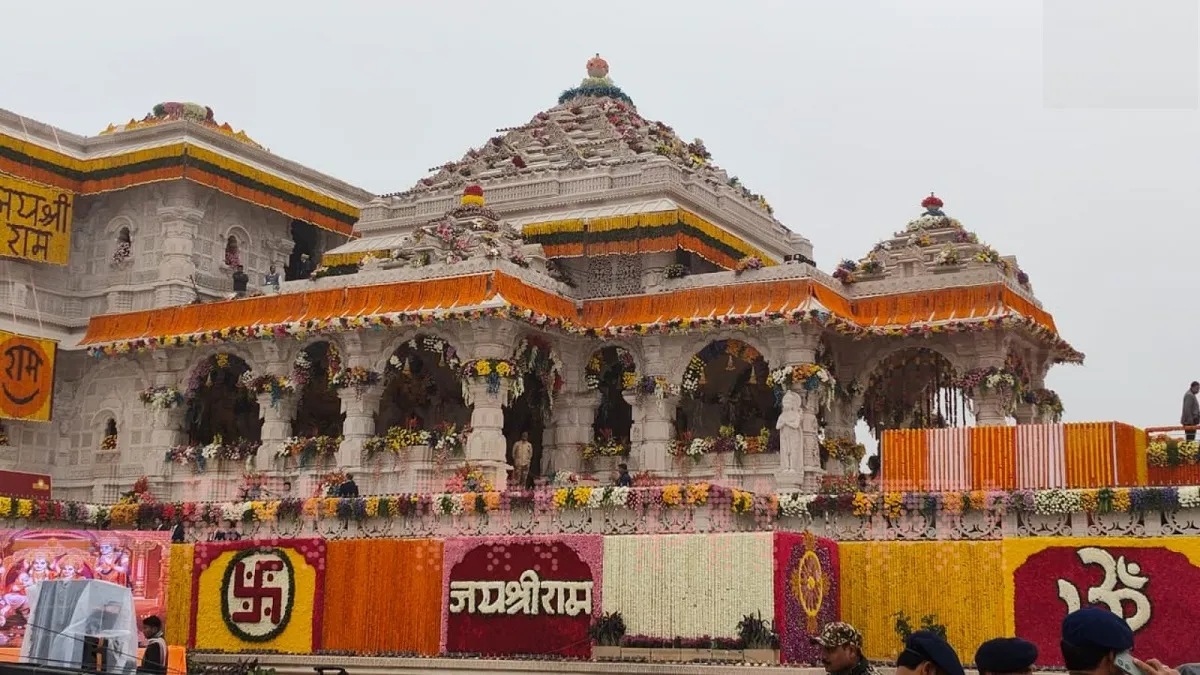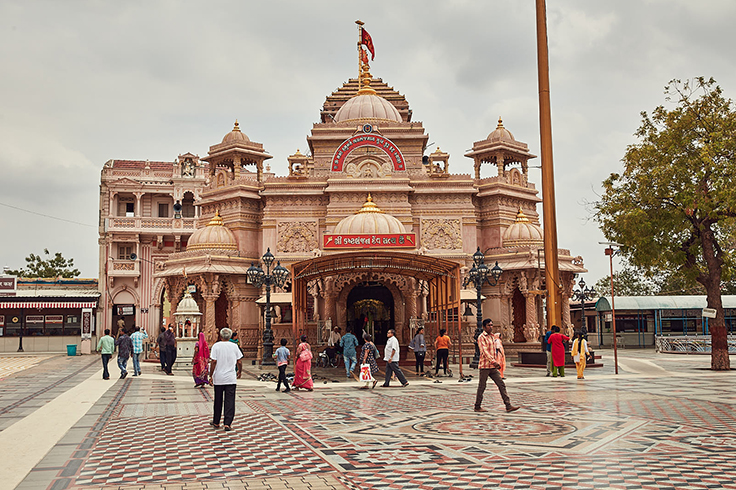What is the origin and significance of Nag Panchami?
Nag Panchami (Naga-pancami) is an ancient Hindu festival dedicated to the veneration of snakes. The word literally means “snake-fifth,” since it falls on the fifth day of the bright half of Shravana (usually July–August). The festival spans India and Nepal (and is observed by some Jains and Buddhists as well), reflecting a broad cultural respect for serpent beings. Snakes are deeply symbolic in Indian tradition – they represent both creation and destruction, embodying the cyclical nature of life. They are closely associated with major gods: for example Lord Shiva famously wears a cobra around his neck. In fact, Britannica notes that in modern Hindu practice the “birth of the serpents is celebrated on Naga-Panchami”. Worshipping the Nagas on this day is believed to bring prosperity, health and protection to the family.
Nag Panchami is celebrated to seek protection and blessings from the Nagas, who are regarded as powerful guardian spirits of nature. The festival is rich in meaning: it acknowledges the power of the monsoon (when snakes emerge in large numbers) and pays homage to the natural world. Devotees make offerings to snake idols or even live snakes (handled by expert charmers), praying for safety and good fortune. By honoring the Nagas, people aim to avert dangers (especially snakebites) and ensure the well-being and prosperity of their loved ones. The rituals reinforce cultural values like gratitude for nature’s gifts and humility before its mysteries. In many communities, families gather after the puja to share prasadam (blessed sweets) and recount the legends of the Nagas to the next generation.
People mark Nag Panchami by offering milk, flowers and sweets to the snake deity. These offerings have symbolic meaning. For example, milk is seen as a symbol of life and purity; pouring it for the Naga is thought to please the serpent spirits, so they in turn protect the donors. In practice, a bowl of milk (often mixed with water or yogurt) is poured over the snake idol or anthill shrine, and flowers and rice are strewn around it. (Animals experts note that snakes in nature drink water, not milk, so this practice is symbolic – indeed, forcing milk on a real snake can harm it. Accordingly, the milk is offered to idols or safely at snake-pit shrines.) People also draw rangoli designs of cobras at their doorsteps using colored powders to invite the Naga’s presence.
In short, Nag Panchami is a day of ritual feeding and worship: by honoring the Nagas, devotees honor the forces of nature. It reinforces the idea that even feared creatures have a sacred role. The festival brings families together in prayer and song, strengthening community bonds and the sense of a “sacred bond between humans and nature”. In this way, Nag Panchami teaches respect, gratitude and harmony with all life.
Nag Panchami 2025: Date and Timing

Because Nag Panchami follows the Hindu lunar calendar, its Gregorian date shifts each year. In 2025, Nag Panchami falls on Tuesday, July 29. The Panchami tithi (lunar day) of Shukla Paksha in Shravana begins on the afternoon of July 28 and ends on the afternoon of July 29. Devotees planning the puja note that the most auspicious time in 2025 is early morning on July 29 (roughly 5:40–8:30 AM local time). Because Nag Panchami is tied to the lunar cycle, observers should check local panchangs (Hindu calendars) each year.
For clarity, key details for 2025 are:
- 2025 Date: Tuesday, July 29, 2025.
- Tithi: Shukla Paksha Panchami of Shravana (runs from the afternoon of July 28 to the afternoon of July 29 in 2025).
- Puja Muhurat: Early morning on July 29 (around 5:40–8:30 AM) for best results.
- Regional Variations: Most regions celebrate on Shukla Paksha (bright half), but Gujarat, for example, observes Nag Panchami on the Panchami of Krishna Paksha (waning half), roughly two weeks later.
In 2024, for comparison, Nag Panchami fell on August 9, so devotees in 2025 will notice the date has shifted about 11 days earlier due to the lunar-solar cycle. Indian expatriate communities typically follow the same dates as local Indian calendars (with possible one-day differences by time zone). As always, consulting a local temple or panchangam can give the precise puja window for one’s location.
Legends and Stories of Nag Panchami

Nag Panchami is steeped in mythology and folklore. Important legends connected to the festival include:
- Mahabharata (Sarpa Satra): In the Mahabharata epic, King Parikshit is cursed by a sage’s son and dies from a snakebite by Takshaka, the serpent king. Parikshit’s son Janamejaya then orders a massive snake sacrifice to destroy all serpents. On the fifth day of Shravana, the young sage Astika prays for the snakes and convinces Janamejaya to halt the slaughter. This auspicious turning point is said to have given rise to Nag Panchami: instead of killing snakes, people began honoring them on Shravan Panchami to remember Astika’s mercy.
- Lord Krishna and Kaliya: A beloved folk tale (from Krishna’s childhood in Vrindavan) tells of Krishna subduing Kaliya, a poisonous multi-headed cobra. Kaliya had made the Yamuna River undrinkable, but Krishna danced on Kaliya’s hoods to purify it. Defeated, Kaliya begged for mercy and vowed not to harm any more villagers. Nag Panchami is often linked to this legend: devotees celebrate Krishna’s victory over Kaliya and the promise of peace with the serpents.
- Manasa Devi (Naga Kanya): In eastern India, Nag Panchami coincides with worship of Manasa, the snake goddess. Manasa is said to be born of sage Kashyapa and a serpent. Legends describe how Manasa cursed (and later protected) people who ignored snake worship. In rural Bengal and Odisha, for example, women observe fasts and pray to Manasa on this day, reflecting the intertwined worship of Nagas and the goddess. Traditional songs and stories of Manasa – such as how she punished those who refused her – are told around Nag Panchami.
- Serpent Kings (Nagas): The festival also honors famed mythic serpents like Vasuki. Vasuki (the five-headed snake) was used as the churning rope during the Samudra Manthan (ocean-churning) in Hindu cosmology. He is closely associated with Shiva (who wears him around his neck) and Vishnu (on whom he rests). Invoking Vasuki and other legendary nagas on Nag Panchami underscores the sacred status of serpents in Hindu lore.
- Folk Stories: Many simple village tales teach the lessons of the day. One such tale tells of a poor farmer whose sons accidentally killed a cobra’s offspring while plowing. The mother cobra took revenge by biting the family. On Shravan Panchami, the farmer’s daughter offered a humble bowl of milk in prayer. Touched by her devotion, the cobra revived the family and departed in peace. Stories like this emphasize forgiveness, compassion and the power of sincere devotion toward even dangerous creatures.
- Ancient Roots: Reverence for snakes goes back millennia. Nagas appear in the Rigveda and other Vedic texts, and many Puranas (e.g. Garuda Purana, Skanda Purana) prescribe rituals for snake worship. Over time, these beliefs coalesced into the popular festival of Nag Panchami, showing a continuous tradition of snake veneration in South Asian culture.
Rituals and Practices

Nag Panchami is observed with heartfelt devotion. The typical puja involves:
- Preparations: Homes are cleaned and families bathe early in the morning. Many women and children observe a fast (drinking only water or milk) until the puja is completed. Out of reverence, no one digs the earth or plows fields on this day to avoid harming any hidden snakes.
- Shiva Puja (Optional): It is common to begin the ceremony with a brief prayer to Lord Shiva. Devotees may pour milk or water on a Shiva lingam and break a coconut at its base, seeking Shiva’s blessings. This is because Nagas are closely associated with Shiva (as his ornament and vehicle), and pleasing Shiva is seen as auspicious before the main snake puja.
- Snake Altar or Shrine: A cobra image is prepared on an altar. This may be a clay snake idol, a metal statue or even a painting. In many villages, the anthill or a snake pit itself is considered the altar (nagasthana). The snake figure or mound is decorated with garlands of flowers, turmeric or vermilion marks, and sacrificial grass (durva).
- Offerings (Prasad): The chief offering is milk (sometimes mixed with water, yogurt or honey). A bowl of milk is poured over the snake idol or into the anthill. Other offerings include uncooked rice, sweets (e.g. kheer or ladoos), turmeric powder, vermilion and flowers. Oil lamps are lit and incense is burned. Special local dishes may be prepared; for example, in Goa women make patoleo (sweet coconut-rice dumplings) as an offering. After the puja, the offered food is distributed as prasadam to participants.
- Mantras and Prayers: Devotional chants are recited. Common mantras include “Om Namah Shivaya” (invoking Shiva) and the Naga Stotra. Traditional verses enumerate famous nagas (Ananta, Vasuki, Shesha, Kaliya, etc.) by name. These chants ask for the protection of the Nagas and honor their divine qualities.
- Temple Visits and Celebrations: Many devotees visit snake temples or Shiva temples on this day. Priests conduct special Nag Panchami pujas in such shrines. In public spaces, snake-charmers often bring live cobras or pythons; on Nag Panchami these snakes are paraded and venerated, with many people offering them milk or feeding them sugar by hand (guided by the charmer).
In rural areas, Nag Panchami rituals often take place at outdoor snake shrines. Villagers gather at anthills, caves or ponds believed to be inhabited by Nagas. There they pour milk and grains directly into the earth or water, treating the natural shrine itself as the deity. This underscores the belief that the Nagas reside in and protect these spots.
In Nepal, Nag Panchami is celebrated with similar fervor. Nepali Hindus paste snake posters on their doors and visit Nagasthans (snake temples or ponds) to pour milk and rice into the water. The Naga is revered as a rain god there, so this puja is seen as a prayer for good monsoon and bountiful crops. Nag Pokhari in Kathmandu, for instance, becomes the center of large gatherings and fairs on Shravan Panchami.
Caution: The practice of offering milk to a snake is symbolic. Snakes do not naturally drink milk – they drink water. In fact, experts warn that forcing milk on a snake can be harmful. Nag Panchami worship focuses on idols and controlled settings rather than freely giving milk to wild snakes.
Regional Variation

Nag Panchami customs differ across regions:
- North India (UP, Bihar, MP): Families often perform the puja at home. A snake idol or image is placed on the courtyard floor and ritually bathed with milk and honey. It is then decorated with rice, flowers and vermilion. In many villages the community shares a simple meal after the puja.
- Bengal & Odisha: Here Nag Panchami overlaps with worship of the snake goddess Manasa. Women observe fasts for Manasa and pray under sacred trees, offering vermilion and sweets. Folk tales of Manasa’s blessings and wrath are recited, stressing the importance of snake worship in local culture.
- South India (TN, KA, KL): The festival is integrated into temple rituals. Devotees visit village snake shrines or Shiva temples, decorating snake idols with flower garlands and kumkum. Traditional folk dances and songs about Nagas are performed by local artists, celebrating the serpent’s protective power.
- Nepal: As noted above, Nepali Hindus honor Nag Panchami by offering milk and rice at holy ponds and shrines. The day is a major festival with fairs and temple ceremonies, emphasizing the Naga as a rain-bringing deity.
- Goa and Maharashtra: Unique customs include preparing patoleo (steamed sweet rice-coconut cakes) as offerings for the Nagas. Some villagers place these dumplings in their fields, believing the snakes will feed on them instead of harming crops. In Western India, Nag Panchami often coincides with local fairs and collective prayers.
Despite these regional differences, the core idea remains the same everywhere: honor the Nagas and invoke their protection and blessings for the household and land.
Spiritual and Practical Significance

Nag Panchami offers both spiritual and practical lessons:
- Divine Blessings: Worshipping the Nagas pleases Lord Shiva and other deities. Since the cobra is Shiva’s companion, honoring snakes is seen as pleasing Shiva. Devotees believe sincere prayers on Nag Panchami can remove obstacles and negative energies, providing peace of mind and protection.
- Astrological Relief: In Vedic astrology, snakes are linked to Rahu and Ketu (the lunar nodes). Nag Panchami puja is thought to appease these serpent deities and mitigate the dreaded Kaal Sarp Dosh in one’s horoscope. Thus many believe the rituals bring karmic balance and relieve past mistakes related to snakes.
- Protection from Harm: The festival is essentially a talisman against dangers. By symbolically feeding and respecting snakes, people hope the snakes will spare them from harm. As one article notes, offering milk and respect to the Nagas is believed to ensure “protection from harm” and good health. In rural areas, this belief encourages caution around snakes and discourages killing them.
- Agricultural Harmony: Monsoon rains (which coincide with Nag Panchami) also bring snakes into fields. Farmers traditionally honored snakes for controlling pests. By venerating the serpents, they effectively thanked them for guarding the crops. For example, in Goa and Maharashtra people prepare rice dumplings (patoleo) and leave them in fields as offerings, so that snakes will eat these and not enter living areas. The underlying message is ecological balance: protect the snake, and the snake will protect the harvest.
- Respect for Nature: Nag Panchami emphasizes our bond with nature. As one source notes, the festival “reflects one’s broader respect for nature and its creatures”. By venerating even those beings we fear, communities reinforce compassion and ecological consciousness. Conservationists today also point out that such cultural reverence can reduce killing of snakes and encourage wildlife protection.
- Family and Unity: The day strengthens social ties. Sisters may observe fasts and pray for their brothers’ welfare, invoking the Naga’s blessings for the family. Neighbors and relatives visit each other’s homes, exchange sweets and stories. These communal gatherings and folk fairs foster unity. In all, Nag Panchami brings people together in a shared act of devotion.
- Fertility and Renewal: Snakes are symbols of regeneration (they shed their skins) and are closely tied to water. In agrarian societies, they are seen as harbingers of rain and fertility. Praying to Nagas on Nag Panchami is, in effect, a petition for a good monsoon and abundant crops. The festival thus underscores the hope for renewal and prosperity.
- Conservation and Education: In modern times, Nag Panchami has been used as an occasion to promote snake awareness. Teachers and environmental groups hold talks about snake behavior and safety. By connecting the festival’s cultural importance to wildlife protection, they encourage respect for snakes. Honoring the Nagas traditionally can help reduce fear and foster efforts to conserve endangered snake species.
Conclusion
Nag Panchami is more than a one-day ritual – it is a celebration of harmony and gratitude. Its ancient legends and rituals teach humility and respect for all life. By honoring the Nagas and seeking Shiva’s grace, devotees integrate spiritual devotion into everyday life. The festival reminds us that even creatures we fear have a place in the divine order.
As Nag Panchami returns on July 29, 2025, its enduring message remains clear: by offering reverence to the serpent gods, people reaffirm the sacred bond between humanity and nature. The lamps lit and mantras chanted on this day symbolize hope and protection for the year ahead. In the end, Nag Panchami teaches that even a humble offering of milk to a small idol can express deep respect for life. This ancient festival thus continues to unite faith, folklore and ecology in a timeless prayer for peace and prosperity. It remains heartfelt tribute to nature’s bounty and balance.

















